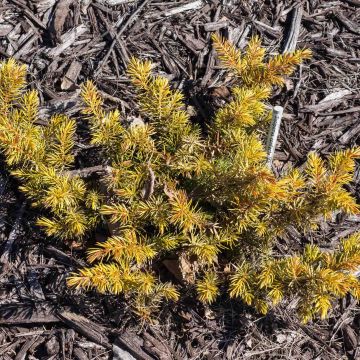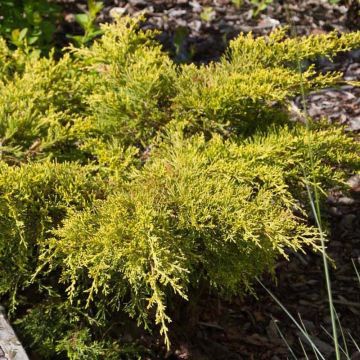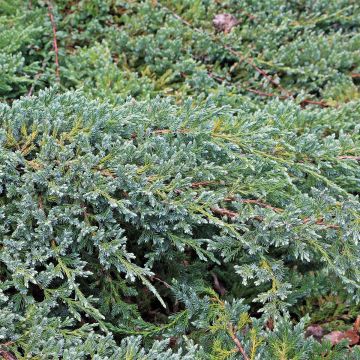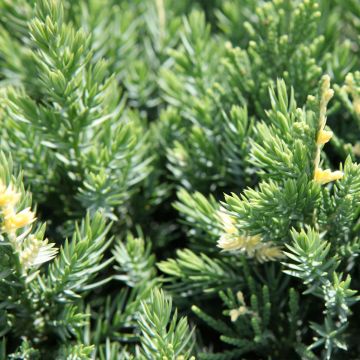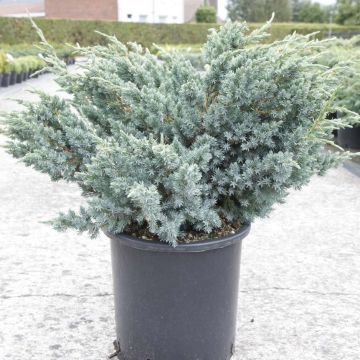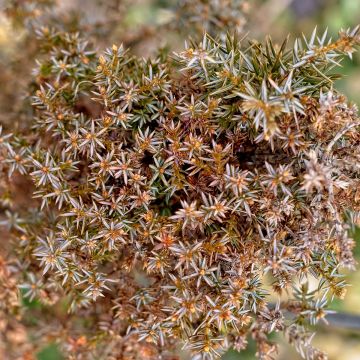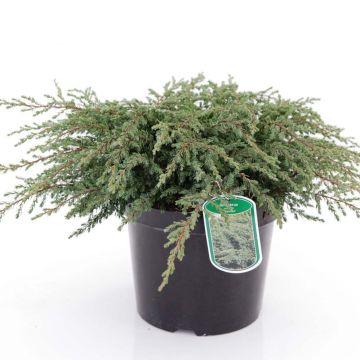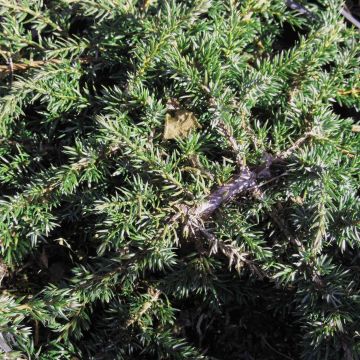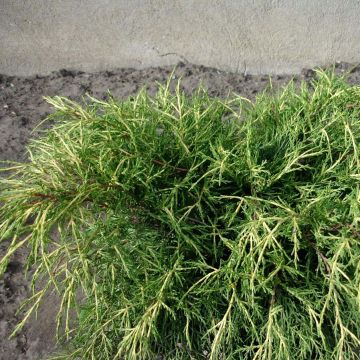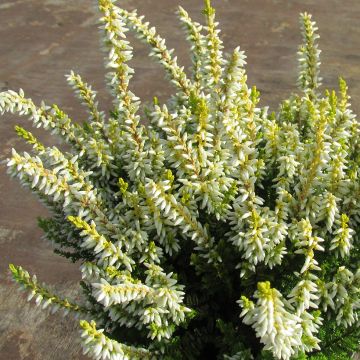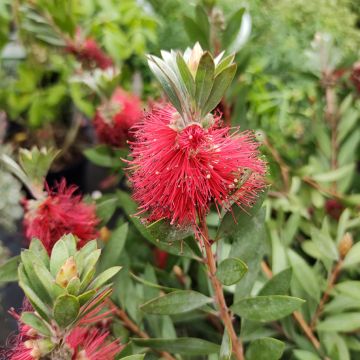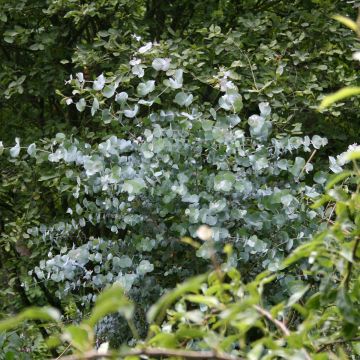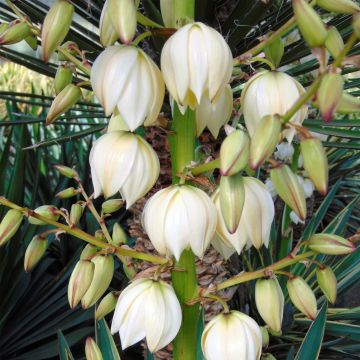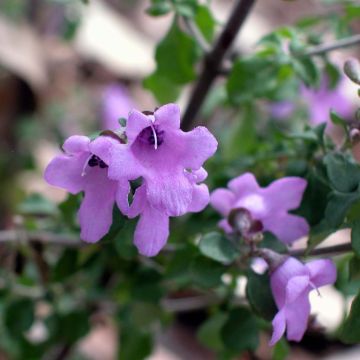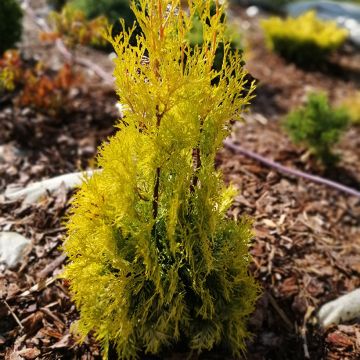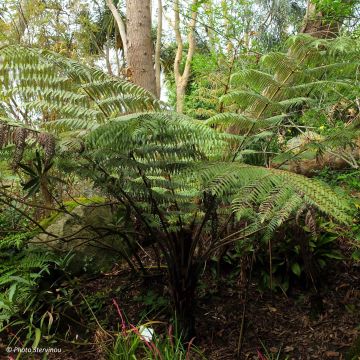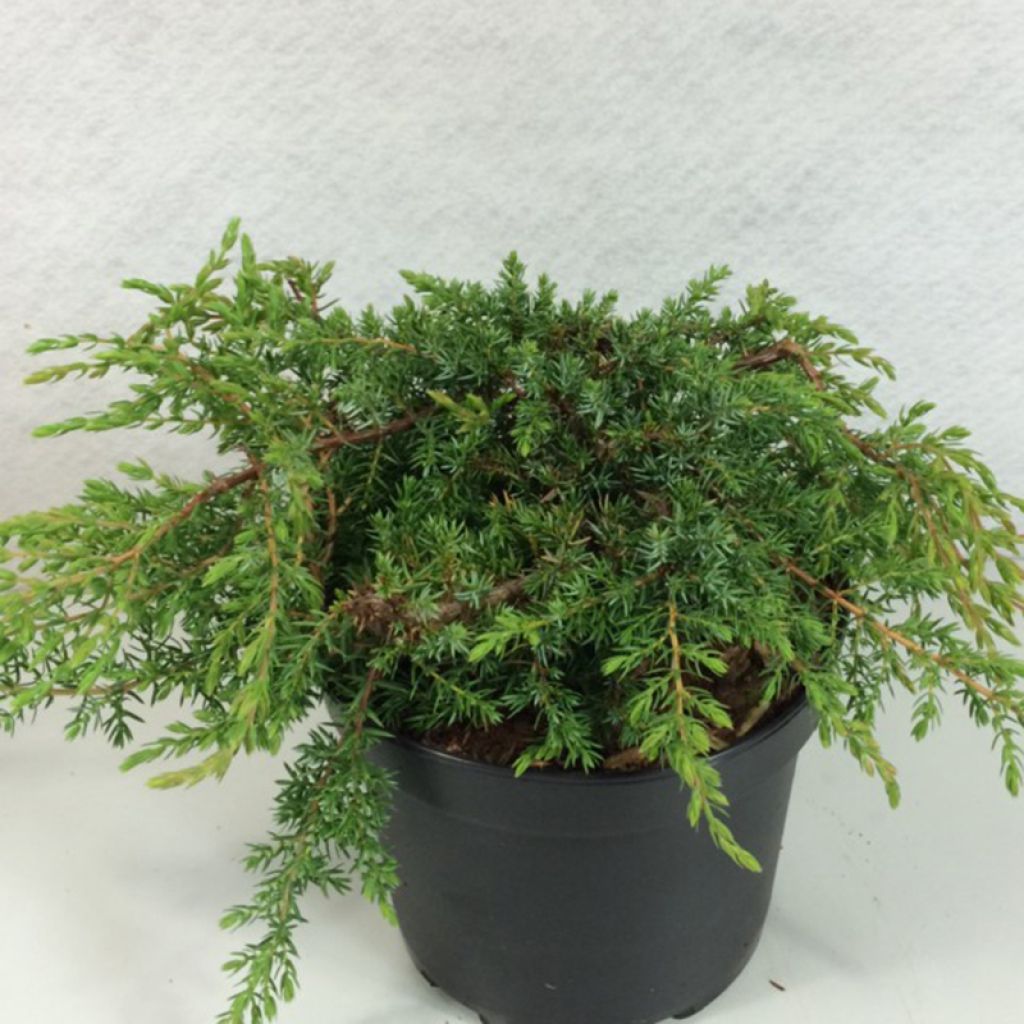

Juniperus communis Hornibrookii - Genévrier commun
Juniperus communis var. hemisphera Hornibrookii
Juniperus communis subsp. hemisphaerica Hornibrookii
Common Juniper
This item cannot be shipped to the selected country
Delivery charge from €5.90
Delivery charge from €5.90
Delivery to Corse prohibited
More information
Schedule delivery date,
and select date in basket
This plant carries a 24 months recovery warranty
More information
We guarantee the quality of our plants for a full growing cycle, and will replace at our expense any plant that fails to recover under normal climatic and planting conditions.
From €5.90 for pickup delivery and €6.90 for home delivery
Express home delivery from €8.90.
From €5.90 for pickup delivery and €6.90 for home delivery
Express home delivery from €8.90.
Delivery to Corse prohibited: UE law prohibits the import of this plant from mainland France to Corse as part of the fight against Xylella fastidiosa. Please accept our sincere apologies.
More information
Does this plant fit my garden?
Set up your Plantfit profile →
Description
Juniperus communis 'Hornibrookii' is a robust common juniper with a prostrate habit that forms a somewhat shaggy form, with fine prickly branches, covered with dense, grey-green foliage all year round, which is silver-blue underneath. This extremely hardy conifer with slow growth is a robust groundcover plant, ideal for enhancing a large slope, a wall or a rockery. It is perfectly adapted to difficult conditions. It adapts to all conditions, from full sun to shade in a hot climate, and appreciates well-drained soil, even poor, occasionally dry and limestone soils.
Juniperus communis is an evergreen, prickly conifer belonging to the cypress family, which groups related species such as Cypress and Chamaecyparis. It is native to northern Europe, North America and Asia Minor. In its natural environment, it has a quite varied habit, conical or spreading to prostrate, reaching 6 m (19 ft 8 in) in height and 3 to 4.5 m (9 ft 10 in to 14 ft 10 in) in width. This species appreciates poor, sandy and/or limestone soils and does not mind dry conditions.
Juniper 'Hornibrookii', derived from this species, was discovered in the west of Ireland by M. Hornibrook, before 1923. Its exceptional qualities have allowed it to be seen in many gardens, in most climates. After 10 years, it will form a prostrate bush with a very spreading habit, measuring 35 cm (13.8 in) in height with a spread of 1 m (3 ft 4 in) to 1.50 m (4 ft 11 in). It grows slowly when it's a young plant, at a rate of 2 cm (0.8 in) in height and 5 cm (2 in) in width in a year. Growth accelerates a bit as the plant matures. An adult plant will measure about 40 to 60 cm (15.7 to 23.6 in) in height to 2 to 3 m (6 ft 7 in to 9 ft 10 in) in diameter. Its rather slender branches, are slightly raised at their tips. They bear juvenile, tight, sharp leaves, 5 to 6 mm (0.2 to 0.2 in) long, prickly and grey-green on the top, with a band of silver-blue stomas on the back. Its small leaves give off a resinous and aromatic smell when rubbed. The fruits appear on the female plants. These are scaly berries that we call galbulus; they are brown-black and rich in essential oil with many therapeutic properties. Junipers have a shallow root system that makes them fragile in the face of strong winds, and makes them difficult to mix with perennials.
The creeping Juniper 'Hornibrookii' is an extraordinary conifer, of great value, which can be planted in the most difficult areas of the garden. It can work well on a large slope, in a rockery, overhanging or against walls or near a swimming pool, because it contrasts well with geometric lines. It is easily grown in pots and is well suited to the art of bonsai. It can also be planted near or overhanging water or cascading from a rockery. The geometric qualities of conifers naturally allow them to work successfully in the design of a contemporary garden, which prefers the aesthetics of shapes, silhouettes and textures to a mix of flowers. These plants can structurally enhance a planting bed, delineate pathways, border a terrace, or easily substitute pruned boxwood. They mix well with tousled grasses and heathers which like similar planting conditions. The best results are achieved by playing with volume and colour.
Report an error about the product description
Juniperus communis var. hemisphera Hornibrookii in pictures
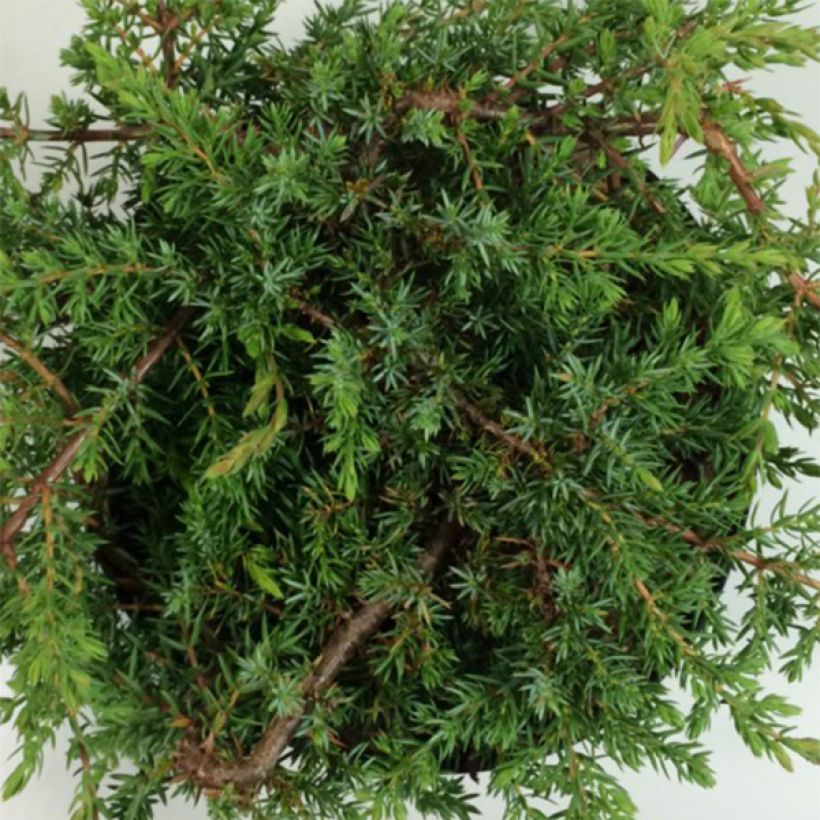

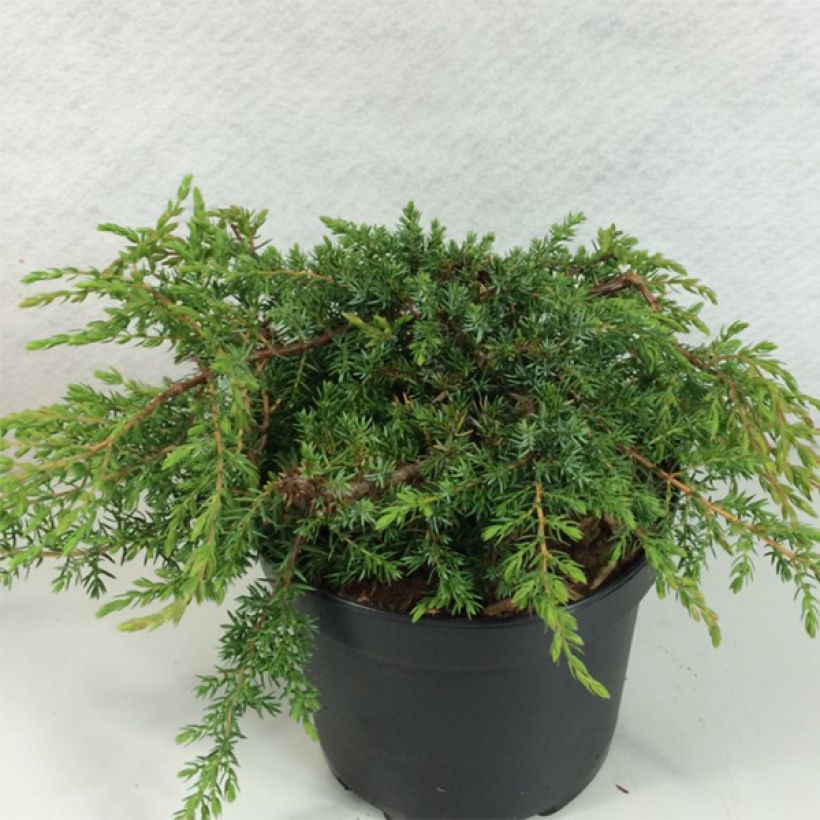

Plant habit
Flowering
Foliage
Safety measures
Botanical data
Juniperus
communis subsp. hemisphaerica
Hornibrookii
Cupressaceae
Common Juniper
Cultivar or hybrid
atteinterespiratoire
Cette plante peut entraîner des symptômes allergiques.
Evitez de la planter si vous ou vos proches souffrez de rhinite saisonnière ("rhume des foins").
Davantage d'informations sur https://plantes-risque.info
Other Juniperus - Juniper
Planting and care
Juniperus communis 'Hornibrookii' can be planted from September to November and from February to June in well-drained, light, even limestone and poor soil. A rocky or sandy and occasionally dry soil does not bother it. Choose a very sunny or semi-shaded spot, sheltered from prevailing winds. Soak the root balls well before planting. Add an organic matter at planting and water abundantly for the first few years, in case of prolonged drought. Every year, in April, add a special conifer fertiliser and hoe the soil in summer. This extremely hardy conifer, however, dislikes heavy or waterlogged soil. Pruning is not necessary as this plant looks at its best when it is allowed to grow freely.
Planting period
Intended location
Care
This item has not been reviewed yet - be the first to leave a review about it.
Evergreen shrubs
Haven't found what you were looking for?
Hardiness is the lowest winter temperature a plant can endure without suffering serious damage or even dying. However, hardiness is affected by location (a sheltered area, such as a patio), protection (winter cover) and soil type (hardiness is improved by well-drained soil).

Photo Sharing Terms & Conditions
In order to encourage gardeners to interact and share their experiences, Promesse de fleurs offers various media enabling content to be uploaded onto its Site - in particular via the ‘Photo sharing’ module.
The User agrees to refrain from:
- Posting any content that is illegal, prejudicial, insulting, racist, inciteful to hatred, revisionist, contrary to public decency, that infringes on privacy or on the privacy rights of third parties, in particular the publicity rights of persons and goods, intellectual property rights, or the right to privacy.
- Submitting content on behalf of a third party;
- Impersonate the identity of a third party and/or publish any personal information about a third party;
In general, the User undertakes to refrain from any unethical behaviour.
All Content (in particular text, comments, files, images, photos, videos, creative works, etc.), which may be subject to property or intellectual property rights, image or other private rights, shall remain the property of the User, subject to the limited rights granted by the terms of the licence granted by Promesse de fleurs as stated below. Users are at liberty to publish or not to publish such Content on the Site, notably via the ‘Photo Sharing’ facility, and accept that this Content shall be made public and freely accessible, notably on the Internet.
Users further acknowledge, undertake to have ,and guarantee that they hold all necessary rights and permissions to publish such material on the Site, in particular with regard to the legislation in force pertaining to any privacy, property, intellectual property, image, or contractual rights, or rights of any other nature. By publishing such Content on the Site, Users acknowledge accepting full liability as publishers of the Content within the meaning of the law, and grant Promesse de fleurs, free of charge, an inclusive, worldwide licence for the said Content for the entire duration of its publication, including all reproduction, representation, up/downloading, displaying, performing, transmission, and storage rights.
Users also grant permission for their name to be linked to the Content and accept that this link may not always be made available.
By engaging in posting material, Users consent to their Content becoming automatically accessible on the Internet, in particular on other sites and/or blogs and/or web pages of the Promesse de fleurs site, including in particular social pages and the Promesse de fleurs catalogue.
Users may secure the removal of entrusted content free of charge by issuing a simple request via our contact form.
The flowering period indicated on our website applies to countries and regions located in USDA zone 8 (France, the United Kingdom, Ireland, the Netherlands, etc.)
It will vary according to where you live:
- In zones 9 to 10 (Italy, Spain, Greece, etc.), flowering will occur about 2 to 4 weeks earlier.
- In zones 6 to 7 (Germany, Poland, Slovenia, and lower mountainous regions), flowering will be delayed by 2 to 3 weeks.
- In zone 5 (Central Europe, Scandinavia), blooming will be delayed by 3 to 5 weeks.
In temperate climates, pruning of spring-flowering shrubs (forsythia, spireas, etc.) should be done just after flowering.
Pruning of summer-flowering shrubs (Indian Lilac, Perovskia, etc.) can be done in winter or spring.
In cold regions as well as with frost-sensitive plants, avoid pruning too early when severe frosts may still occur.
The planting period indicated on our website applies to countries and regions located in USDA zone 8 (France, United Kingdom, Ireland, Netherlands).
It will vary according to where you live:
- In Mediterranean zones (Marseille, Madrid, Milan, etc.), autumn and winter are the best planting periods.
- In continental zones (Strasbourg, Munich, Vienna, etc.), delay planting by 2 to 3 weeks in spring and bring it forward by 2 to 4 weeks in autumn.
- In mountainous regions (the Alps, Pyrenees, Carpathians, etc.), it is best to plant in late spring (May-June) or late summer (August-September).
The harvesting period indicated on our website applies to countries and regions in USDA zone 8 (France, England, Ireland, the Netherlands).
In colder areas (Scandinavia, Poland, Austria...) fruit and vegetable harvests are likely to be delayed by 3-4 weeks.
In warmer areas (Italy, Spain, Greece, etc.), harvesting will probably take place earlier, depending on weather conditions.
The sowing periods indicated on our website apply to countries and regions within USDA Zone 8 (France, UK, Ireland, Netherlands).
In colder areas (Scandinavia, Poland, Austria...), delay any outdoor sowing by 3-4 weeks, or sow under glass.
In warmer climes (Italy, Spain, Greece, etc.), bring outdoor sowing forward by a few weeks.

































